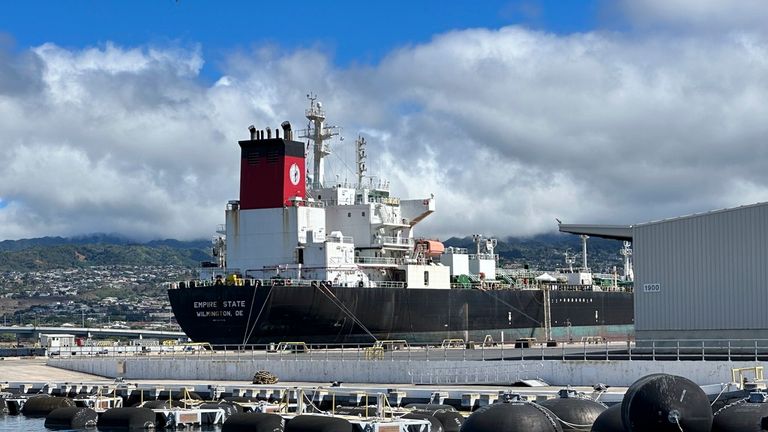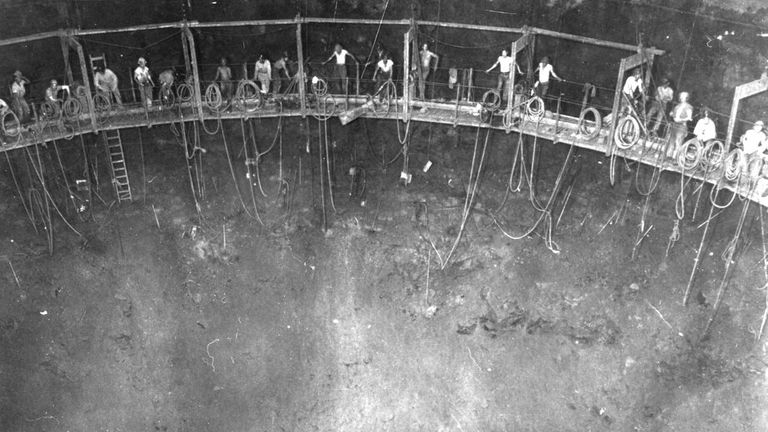Millions of litres of fuel drained after leak at a storage facility poisoned thousands of people
The complex has supplied fuel to military ships and planes navigating the Pacific Ocean since World War Two, but the leak prompted an outcry in Hawaii to shut the tanks down - despite their importance to national security.
Thursday 28 March 2024 11:11, UK
The US military has finished draining millions of litres of fuel from a hidden government storage installation in Hawaii that poisoned thousands of people when it leaked jet fuel into Pearl Harbor's drinking water in 2021.
The Red Hill Bulk Fuel Storage Facility has supplied fuel to military ships and planes navigating the Pacific Ocean since the Second World War, but the leak prompted an outcry in the island state to shut the tanks down - despite their importance to national security.
The tanks sit above an aquifer supplying water to 400,000 people, and around 6,000 became ill from the discharge.
Joint Task Force Red Hill has overseen repairing and draining around 104 million litres of fuel from the tanks since October.
They are to be permanently deactivated by another team - the Navy Closure Task Force - which is also responsible for cleaning up the environment and restoring the aquifer.
Vice Admiral John Wade, the commander of the taskforce that drained the tanks, said its mission was to "safely and expeditiously close the facility to ensure clean water and to conduct the necessary long-term environmental remediation".
Shortly after the spill, the Honolulu Board of Water Supply stopped pumping water from the aquifer to not contaminate the water system.
It is searching for alternative water sources but the Pearl Harbor aquifer was key as it provided about 20% of the water consumed in the city.
A previous investigation into the disaster said a series of errors caused the leak as hundreds of people suffered from nausea, headaches and rashes afterwards.
Read more:
How ships bombed at Pearl Harbor could help understand climate change
Pond mysteriously turns bright pink in Hawaii
The Navy reprimanded three now-retired military officers for their roles in the spill but no one was fired or suspended.
In the first six weeks of the leak, the Navy spent more than $250m (£198m) to address the emergency.
Be the first to get Breaking News
Install the Sky News app for free


The military built the Red Hill Bulk Fuel Storage Facility in the early 1940s by excavating caverns within the mountain ridge to protect 20 fuel tanks from aerial attacks.
Each tank is about the height of a 25-storey building and can hold 47 million litres of fuel.






